
Artist Natalie Featherston on Why Are We So Hard On Ourselves As Artists


In this inspiring conversation between Natalie Featherston and Charuka Arora, they delve deep into the creative process and art. From discussing the Trompe l’oei art technique to still life painting, to self-doubt and imposter syndrome, they provide insight and advice on a range of topics. They also explore the importance of writing down ideas, staying inspired, organizing solo shows, and the impact of technology on the creative process. Natalie Featherston shares her experiences of overcoming fear and achieving her creative goals and offers valuable advice for aspiring artists. This conversation is sure to give listeners an appreciation for the creative process and provide valuable insights for any artist.
Topics covered in this podcast
- 3:58 – Conversation on Trompe l’oei Art Technique
- 11:07 – Conversation between Charuka Arora and Natalie Featherston on Self-Doubt and Career Building
- 17:32 – Conversation between Natalie Featherston and Charuka Arora on Balancing Commercial Art and Fulfilling Work
- 25:08 – Conversation on Imposter Syndrome and Creative Expression
- 26:52 – Conversation between Charuka Arora and Natalie Featherston on Fear of Being a “Sellout” as an Artist
- 31:31 – Conversation on Self-Validation and External Validation in the Artistic Process
- 34:12 – Conversation on Suppressing Creativity and the Worst Advice Received in the Art World
- 46:04 – Conversation between Natalie Featherston and Charuka Arora on Creative Inspiration and Organizing Solo Shows
- 55:57 – Exploring the Impact of Technology on the Creative Process
- 1:03:00 – Conversation with Natalie Featherston: Overcoming Fear and Achieving Creative Goals



About Natalie Featherston
Artist Natalie Featherston works exclusively in the centuries-old realm of trompe l’oeil, creating dazzling paintings that combine the virtuosity of a Dutch master with a thoroughly modern mind. The Chicago Sun-Times has described her work as, “Artful beyond just illusion and trickery, they are truly masterful still lifes made with both craft and wit.”
Natalie says, “What inspires me is the creative voice, whimsy, and humor trompe l’oeil allows the artist to express. Unlike portraits or landscapes, still, life doesn’t simply exist around us. You have to build the stage for the painting, selecting the color and textures. The end result draws the viewer in and connects with them in a meaningful way. This is why I’ve always found trompe l’oeil to be a challenge, and I can’t imagine painting anything else.”

Natalie discovered her love for painting by accident in the early 1990s after moving from North Carolina to New York City to pursue her master’s degree in music. An accomplished cellist, she has had the honor of performing at Carnegie Hall and across Europe as a soloist and chamber musician.
“Although I enjoyed making music, I wanted to do something more creative and unique, something that was altogether mine. I started drawing from the models at the Art Students League and I was hooked.” Classes soon followed at some of New York’s most venerable art institutions: The National Academy of Design, The School of Visual Arts, and The Drawing Academy of the Atlantic culminating in a six-year apprenticeship with Michael Aviano.
Ms. Featherston’s paintings have received numerous awards from some of the most distinguished art organizations in the country, including the Art Renewal Center, the Salmagundi Club, and the Catherine Lorillard Wolf Club. Her paintings have appeared in The Artist’s Magazine, American Art Collector, Southwest Art, and Fine Art Connoisseur to name but a few of the publications that have featured her work.
In 2021 Natalie was awarded “Best Trompe L’oeil” at the 15th Art Renewal Center Salon, the largest and most prestigious art competition in the world for representational art. Ms. Featherston is represented by art galleries in major cities across the country, and her paintings are sought after by notable collectors including Danielle Steele, J.J. Abrams, Alex Kurtzman, and Alice Cooper.
Watch & Listen to this podcast Episode
Key Highlights from the Episode
Q. Charuka: When I was doing fashion, I used to fight with my family, especially my father, because ah for them. It never made sense, and I was like, “Now it’s like a prestige issue also,” because I took this big leap and now I’m saying I don’t want to do this after 3 or 4 years, I think, and it really shook my own trust in myself, and it took me a long time to build that back.
Did you have anything like that because you were doing pretty well and you knew people would tell you, “Okay, you’re doing so well,” or did you have any moments of self-doubt? When you were regrouping yourself and thinking about what you wanted to do further.
A. Natalie Featherson: I’m sure I did have it. It has been a long time ago now like I am in my fifties, so it was like we were talking about ancient history. Um, I am certain that I did, because, like, I do remember that being a really tough part of this whole art thing.
You know, it’s like trying to go to school, try to learn, work a full-time job, create art, and still try to find time to be creative. I was pretty single-minded, and I’m very stubborn. So I don’t remember anybody. I’m sure a lot of people tried to talk me out of it, but I was pretty bent on it at that point. Yeah, I really loved what I was doing and was very passionate about it.

But I’m sure there were, and I think my moments of self-doubt came a little later when I, um, studied in New York for 10 years with a bunch of different people, but I spent the bulk of my education with a painter named Michael Leviano, who really taught me everything I know. I’m incredibly grateful to him. It was a long time, but I remember when I graduated from his program, and it was very informal. Like we sat in his living room kind of thing. I finished but wasn’t finished with Michael, and I see this today because I do talk to a lot of young artists. You know how much I enjoy talking and Having art friends in our community is so important, but speaking with them, like that was
the hard part for me was, getting out of school because now that you don’t have that community every day and you’re not working towards goals, all of a sudden you’re just on your own and it’s like, “Here you go, go be an artist,” and like that was hard.
That, to me, was very difficult because you knew you were still working. You’re trying to put together a portfolio; you’re trying to start a career where maybe you’re going to sell work or meet collectors or galleries. You know you’re trying to get it going. You know you have a skill set. You know that you’ve just spent years learning, and it’s hard. I mean, to be honest, that was probably the most difficult part for me.

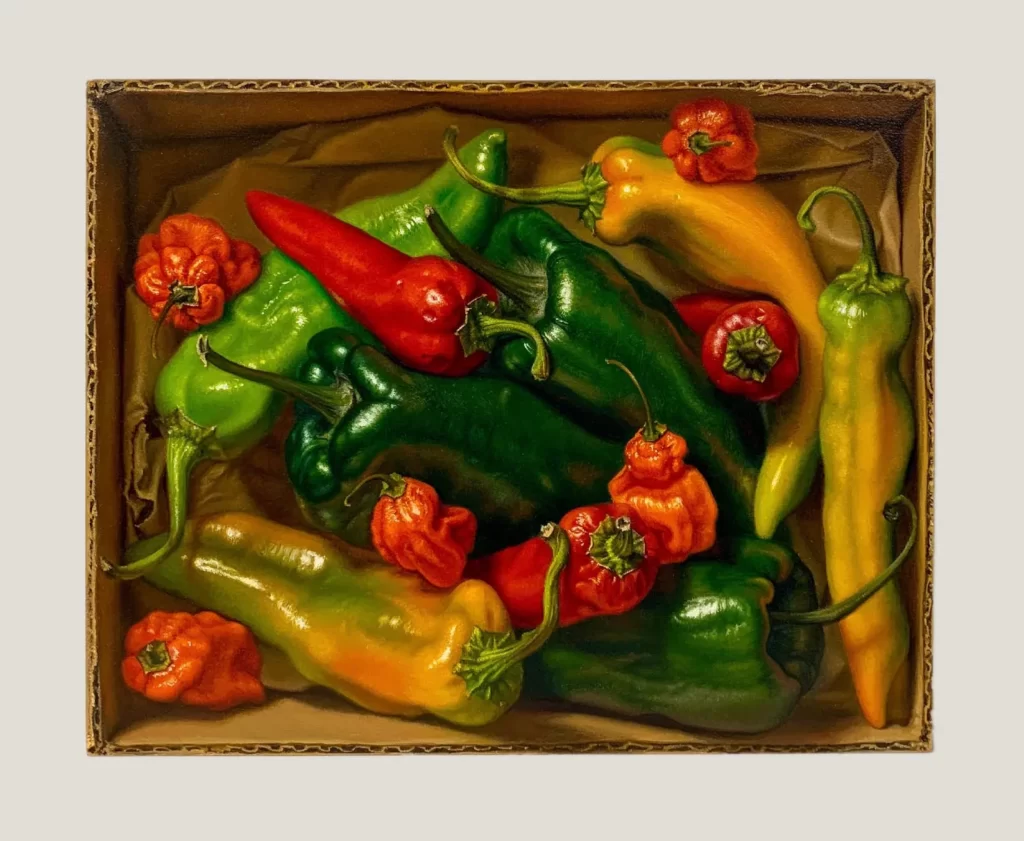
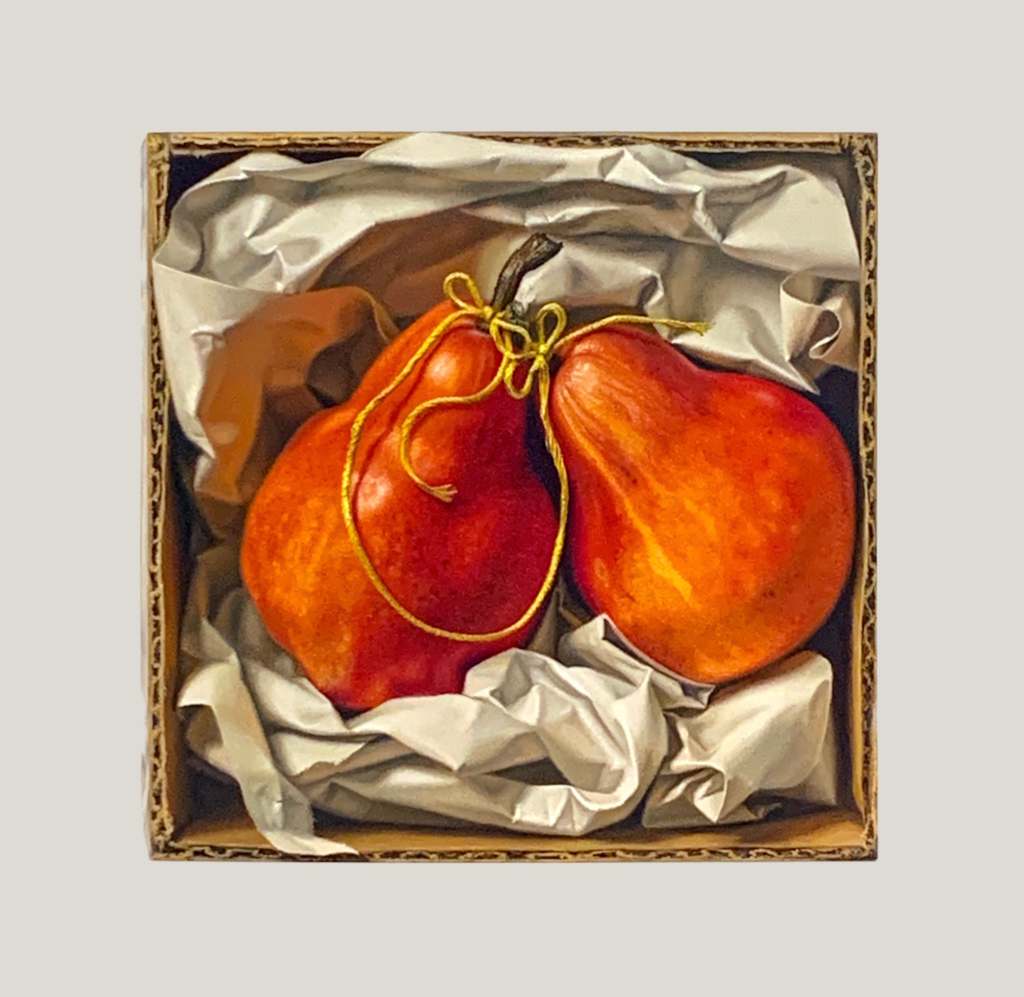
Q. Charuka: You’ve been in the art industry for quite some time. What do you think was your biggest fear if you look back today? What do you think held you back the most, and why do you struggle with it?
A: Natalie Featherson: Something that I struggle with is probably because I make my living selling art. I mean, 95% of my income comes from gallery sales, right? Like, that’s my path. You know there are a lot of ways you can make money as an artist, but that’s where I’m at, which is that I’m very lucky and very fortunate. Don’t get me wrong.
But I do have to find a balance between making work that is, “commercial” and work that I feel is very fulfilling.
You know, when I first started out, I did a lot more still life, which is very popular, and I was doing a whole series of floral paintings. And people love them. The galleries love them. They’re like, “Oh, you should make a bunch of these,” and I’m like, “Okay, I’m like, but I would also like to do this sort of strange thing over there,” and they’re like, “Yeah, that’s not going to sell. We really just want the flower paintings, so, I mean, that’s an example, but I think you know. Commercially, that’s something everybody struggles with.
You want to make work that’s fulfilling to you, work that communicates and speaks to your viewers, work that isn’t just decorative.
You know so, but you also have to pay your rent. A few years ago where I was doing a lot of crayon drawings and, all of a sudden, nobody was selling anything, so I got to really hit the reset button on that and really think about what I was going to do differently.
But I think you know I just created a whole new body of work. I’m like, I’m done,” as I’ll still make a few of those, but like, “I’ve got to change,” like I’ve got a new course here. So it’s not like all of a sudden I’m making something that’s radically different.
I think my themes change, like how I paint a lot in the series. I have like comic book things I like, and then there are crayon things, and there are box paintings, and there are collages, which I have in the back of the canvas paintings and which I freaking love.

Q. Charuka: As artists, I think most of us struggle with self-doubt. As I was recording in the morning with another beautiful artist. Um, and we were speaking about how so she said, “You know, she said even though she has a beautiful career. She’s very successful and popular. She said she didn’t have a proper job. And we held that moment, and I was like, “You know, this is an interesting topic. This is something I want to talk about, like how we as artists have the impostor syndrome, where fear and doubt are so high within us. You’ve been doing this for a very long time. Okay. Do you feel that fear even today? How has that fear evolved for you? Let’s look at it.
A. Natalie Featherston: Oh, I believe everyone suffers from imposter syndrome. I mean, I don’t think that that ever really goes away.
I think that when I start feeling that way, it’s usually when I’m working on something. That is not satisfying to me.
It’s when I’m alone and my fear is that people are going to think I’m a hack, which may be a little nuanced over impossibility that drops, you know like I mean, it’s nomenclature words choice to be a hack. That’s probably my fear.
You know I’m making cheap work; I’m making just work. That’s so commercial that I’m just churning it out for a buck like that’s my fear. Um, and usually when that happens, I just kind of readjusted where I’m going to work.
You know that it’s like that to me. It pushes me towards, you know, the paintings that maybe are a little more difficult or are going to be a little stranger or a little more out there. You already know that’s my anecdote about that.



Liked what you read?
Listen to this & other episodes on









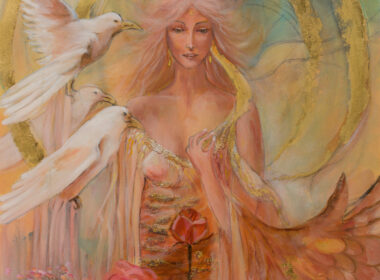


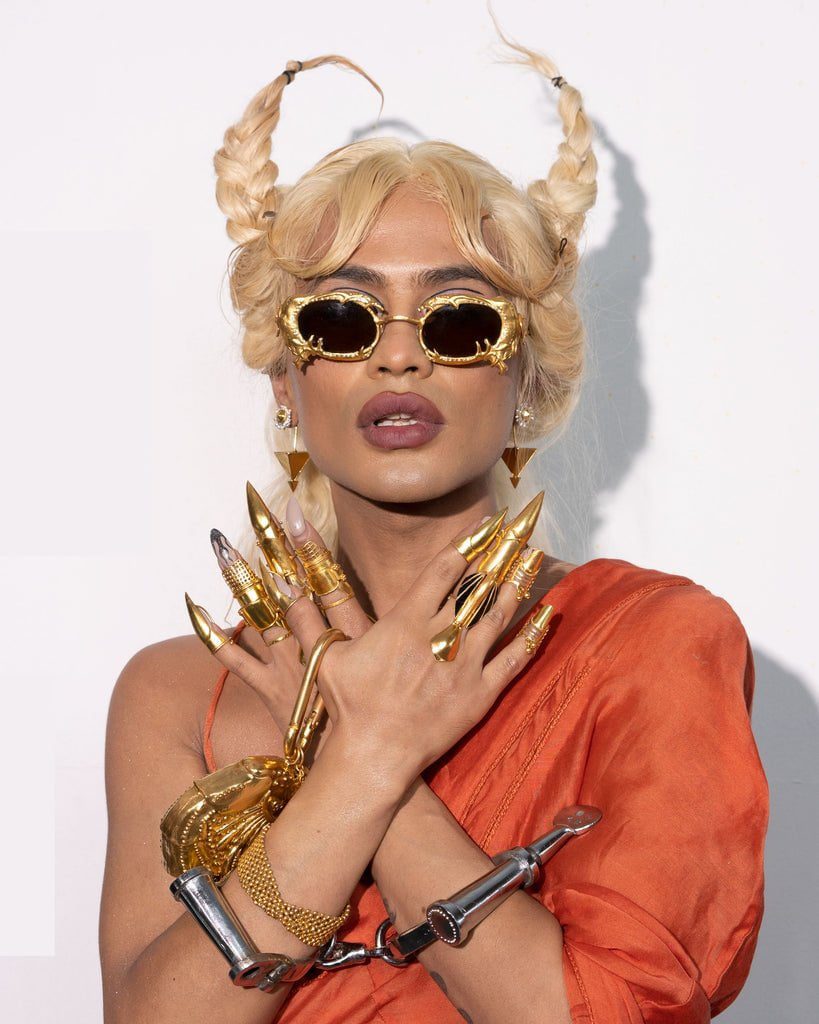

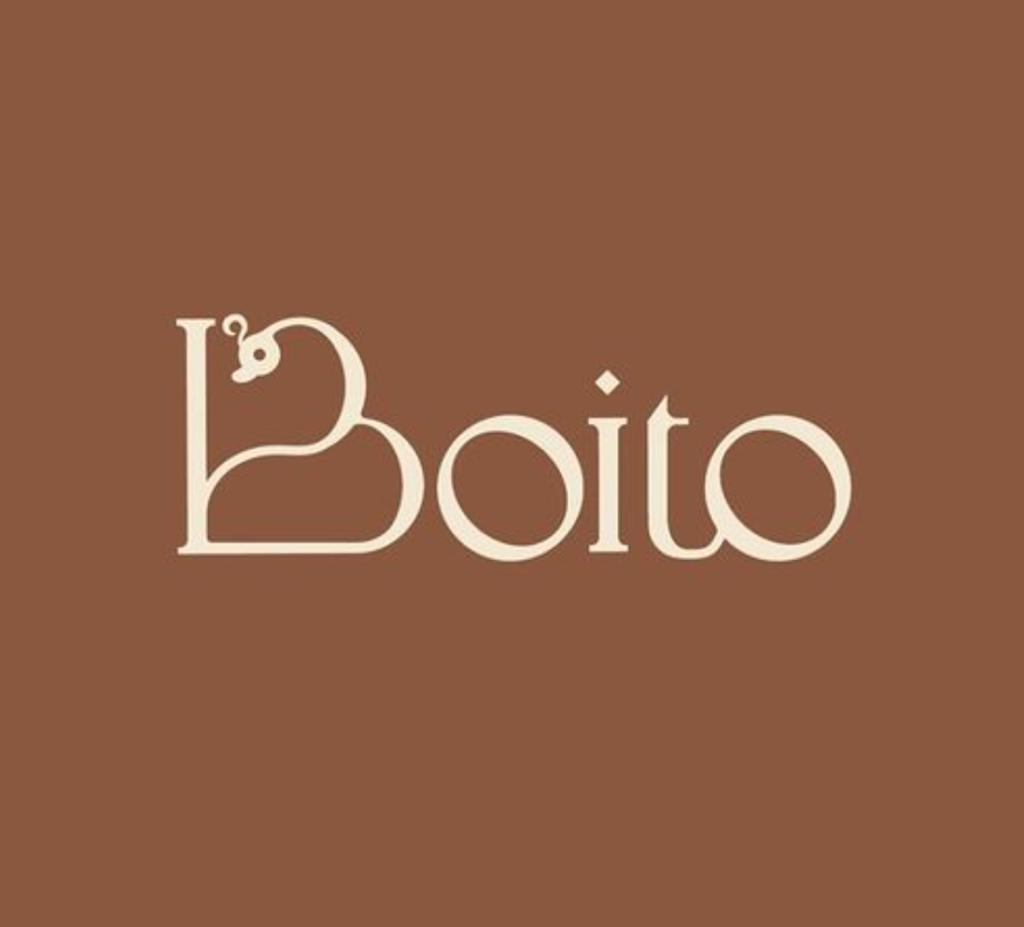


Comments 16